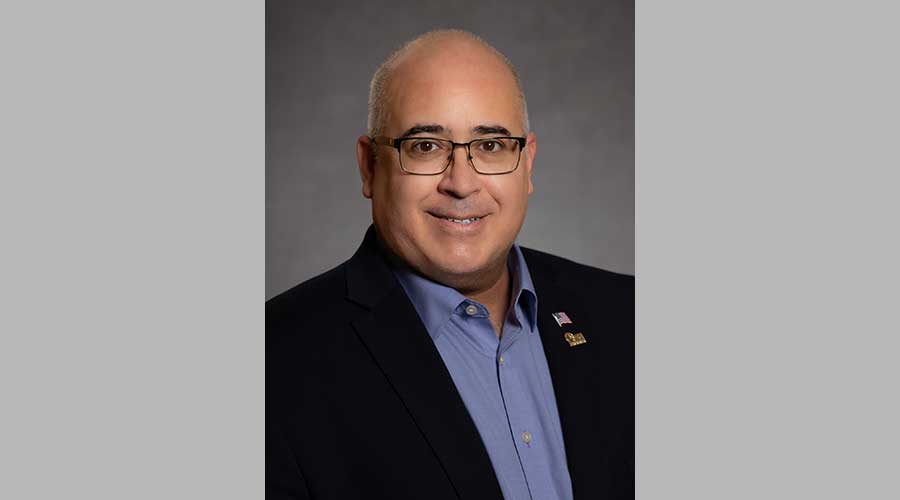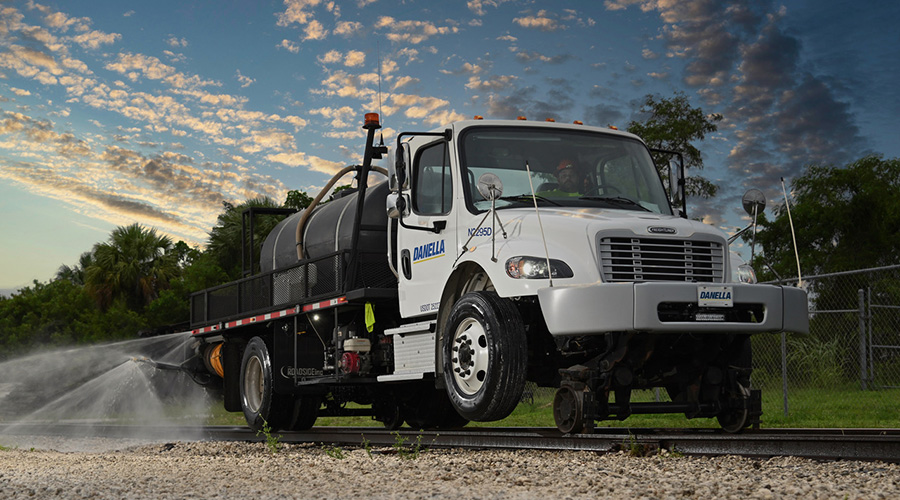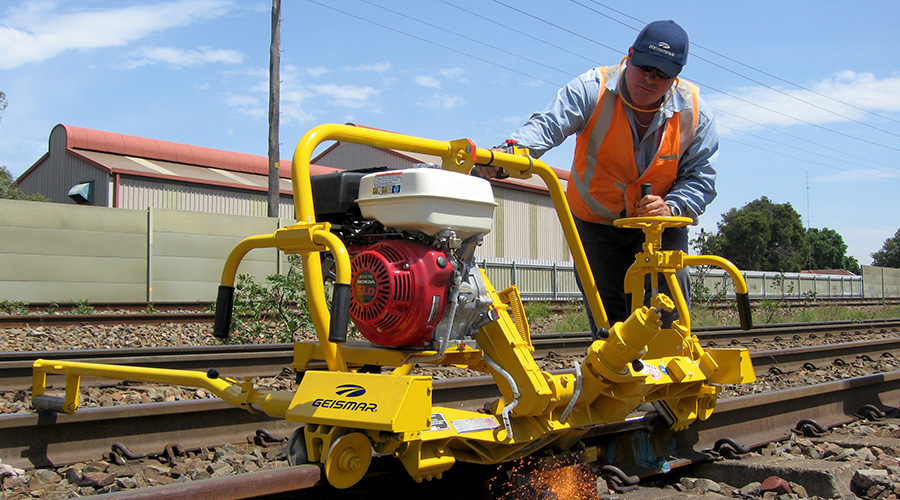Stay updated on news, articles and information for the rail industry
August 2023
Rail News: MOW
Technology update: Track inspection 2023
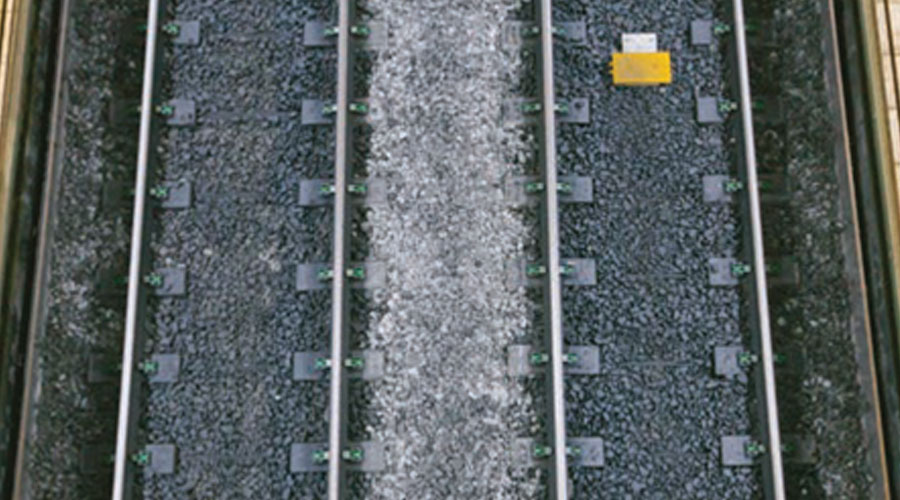
Compiled by Michael Popke
ENSCO Rail
ENSCO Rail continues to leverage the success of its Autonomous Track Geometry Measurement System to “pioneer new frontiers in track inspection technology,” company officials said in an email. ENSCO’s custom-tailored AI algorithms and machine vision systems are designed to ensure accurate fault detection, anomaly identification and overall functional condition evaluation, which enhances the safety and reliability of track inspections, they added.
The advanced AI algorithms interpret intricate real-time imaging data and pinpoint anomalies, including broken rails and faulty components. As inspection data accumulates, ENSCO continuously learns and refines the detection capabilities of the algorithms.
The company’s AI technologies also convert imaging data into continuous strip chart measurements, helping operators to promptly assess functional conditions and implement preventive actions. The transformation of image data into actionable XY datasets enables operators to make real-time insights, enhancing maintenance planning and resource distribution, company officials said.
The machine vision systems are components of ENSCO Rail’s AI-driven track inspection technology. High-resolution cameras capture real-time track images, which are then processed by ENSCO’s AI algorithms. Detected defects in the analyzed data trigger immediate alerts.
Herzog Services Inc.
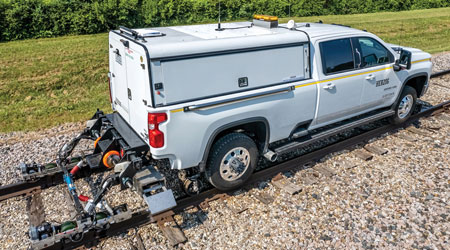
Herzog Services Inc. offers a range of inspection services tailored to the specific needs of the rail industry, including cutting-edge ultrasonic technology and geometry analysis, company officials said.
Designed to identify internal flaws within rail steel, the company’s ultrasonic inspection system is equipped with 28 elements (such as probes and/or transducers). Herzog’s UT system accurately detects internal flaws and provides precise location information through the integration of a global positioning system (GPS) or system mileage. The inspection capability is available for mainline tracks, sidings, spurs and yards. Herzog also offers a dedicated rail unit for inspecting inventory rail and crossovers.
To maximize operational efficiency within work windows, Herzog developed proprietary software designed to optimize the utilization of its ultrasonic inspection systems. Through the continuous testing program, Herzog captures ultrasonic inspection data in conjunction with visual information of the rail surface, enabling post-analysis and verification. This approach enables inspection vehicles to cover greater distances within traditional work windows, company officials said. By utilizing precise GPS data and unique data tracking methods, verification personnel can accurately locate suspect indications without the need for extended time blocks or disruptions to traffic flow.
In addition to ultrasonic inspections, Herzog Services offers a range of supplementary services including visual inspections of joint bars to ensure their integrity and geometry analysis to assess track alignment and stability.
Holland Co.
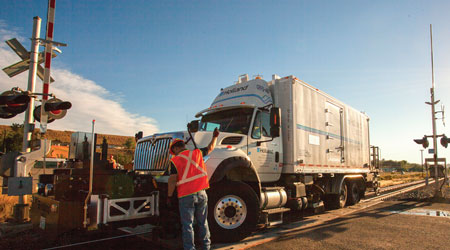
Holland’s Argus® track measurement technology provides multiple ways for railroads to inspect their tracks. From portable inspection to contract testing and locomotive-based autonomous track measurement, the goal is to provide railways with the data they need to see trends in areas and prevent problems before they occur.
“If you look at the Federal Railroad Administration’s derailment rates, there has been a huge reduction in mainline derailments, but yard derailments are still significant,” Holland Senior Director of Product Development Sabri Cakdi said.
To help decrease yard derailments, Holland offers portable inspection systems, including the Track Inspector, a full geometry system with two individual rail sensors, depending on the configuration and use. They can be mounted, configured and calibrated by one person in less than an hour, company officials said. Argus track measurement technology no longer uses a conventional wheel-mounted encoder; it’s been replaced with a non-contact speed and distance measurement device to eliminate hardware reliability issues, officials said.
Holland also offers the Locomotive UGMS, a locomotive-based autonomous track geometry and rail profile measurement system designed to take advantage of existing train routes to provide continuous testing along critical network corridors while eliminating the need for track time.
Loram Technologies Inc.

Loram Technologies Inc. (LTI) can target substructure issues and their underlying origins by integrating historical track geometry data provided by railroad customers with information derived from the company’s Ground Penetrating Radar (GPR) and LiDAR systems. The systems measure ballast fouling, moisture conditions and track formation, and provide information about right-of-way topography, drainage ditch location, and depth and cut/fill conditions, respectively.
The company’s Rail Doctor software brings together and aligns all data for analysis and, ultimately, assists railroads with substructure maintenance management, company officials said.
“The geometry data is a very good tool to find out where the track is not performing correctly, where it’s deteriorating,” said Hamed Kashani, LTI’s manager of railway geotechnics. “We can then go and look for the root cause of the problem and recommend to the railroad how to fix it.”
Once problems are corrected, LTI can monitor the track to determine if the provided solution was the right one.
The company also is working on research projects with two universities to determine the best machines to resolve specific problems. Additionally, LTI is taking steps toward finding correlations between substructure and superstructure (rail and crosstie) defects, as well as automating data collection and increasing the speed of analysis.
Plasser American Corp.
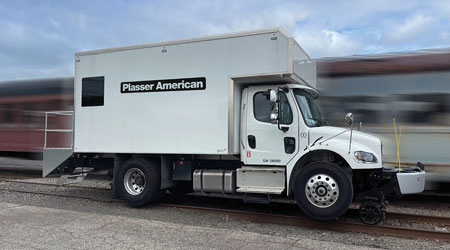
Plasser American Corp.’s Enhanced Rail Inspection system is designed as a continuous data collection system with post-processed analysis, as well as real-time display and defect monitoring. The machine’s ultrasonic rail testing offers improved safety and can help to prevent derailments by detecting potential problems with rails before they cause a failure, company officials said. By detecting problems earlier, the technology also can help reduce maintenance costs and extend rail life.
The Enhanced Rail Inspection system can test at speeds up to 70 kilometers per hour and maintain a pulse density of firing of the transducers at a fixed 4-millmeter distance. The system features Enhanced Pattern Recognition with adaptive learning capabilities and can make both real-time and post-processed decisions on suspect indications. It was “built from scratch from the ground up,” offering the latest in software designed for a Windows 10 64-bit platform, company officials said.
The ultrasonic testing equipment is available in different sizes and shapes, though all systems operate on the same software and electronics. The systems can be installed on traditional, rail-bound platforms, as well as more mobile and smaller hi-rails. A hand-held model also can be used for verification of defects. Plasser American also offers contracted services; the company can run these systems or third-party systems for customers and provide data analysis.
RailPod Inc.
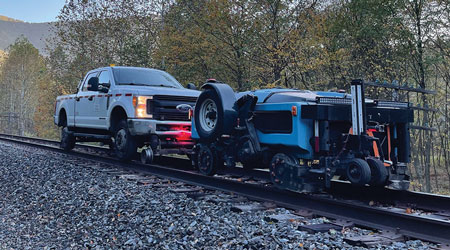
Customers increasingly want track inspection to cover everything within the entire railroad right-of-way, RailPod Inc. officials said. This includes traditional geometry inspections — rail wear, tie quality, joint bar inspections, and ballast and fastener condition — as well as pre-/post-construction surveys, road crossing assessments, route clearances, real-estate assessments, property boundaries, track engineering services, asset tagging, state-of-good repair reports, bridge assessments, track realignment design, corrugation, weld location, rail breaks and overhead catenary condition.
RailPod works with customers across North America and Brazil to identify their inspection needs and help them use collected data “to solve real problems in a cost-effective manner,” company officials said — from building a crosstie budget to determining the exact volume of ballast missing in a post-construction survey when compared to the original design.
RailPod customers benefit from fully integrated software merging mobile and web-based applications that supports the analysis, management and record-keeping of the entire right-of-way on a daily, quarterly and annual basis, company officials said.
RailWorks Corp.
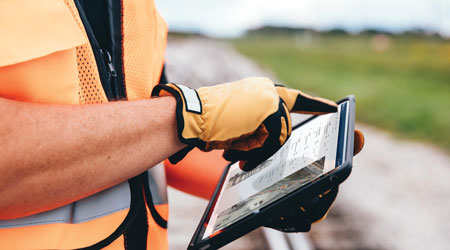
RailWorks Corp.’s Insight is a digital inspection and reporting tool that provides a full view of track inspection reports. Insight offers a single, web-based suite to streamline how track managers and maintenance crews operate.
From a single site to hundreds of properties, RailWorks Insight allows transportation managers to log in and see all their maintenance and inspection information in one place, resulting in informed decision-making for all phases of track maintenance, company officials said. It then provides instant repair budget estimates with dates, GPS-mapped locations, Federal Railroad Administration and Transport Canada defect codes with conditions and recommendations, asset inventory and customizable reports.
Developed in-house by a RailWorks team, Insight is “the only product of its kind built specifically to meet the needs of the track, rail and transit industry,” company officials said.
Senceive Ltd.
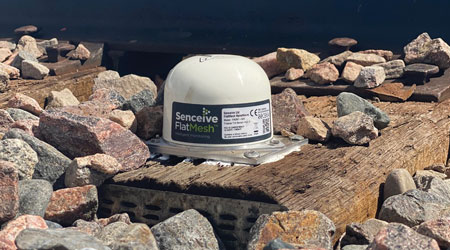
Senceive Ltd. wireless remote monitoring sensor technology can be installed on track, structures and earthworks to monitor long-term movement such as track geometry changes, as well as sudden events like landslides and embankment failures. Low-maintenance, long-life sensing technology provides automated and near real-time alerts of movement, while integrated cameras show the cause of movement without visiting the site, company officials said.
A range of precise triaxial tilt sensors provide data on track geometry parameters, including cross-level, twist, lateral shift and settlement. Complementary sensors provide data on track temperature, strain, displacement, and geotechnical parameters such as soil moisture and ground pore water pressure.
Instruments are rugged, easy to install and designed specifically to withstand harsh railroad conditions — lasting for up to 15 years with minimal maintenance, company officials said. Gateway base stations with various remote data transmission methods (including solar power) send data to a cell phone or computer.
Remote users benefit from online datasets, which typically are updated within minutes, along with automated alerts if pre-set thresholds are breached, company officials said. More than 22,000 Senceive track sensors have been installed on networks worldwide, including all six Class I railroad operators.
Michael Popke is a Madison, Wisconsin-based freelance writer. Email comments or questions to prograil@tradepress.com.
Keywords
Browse articles on ENSCO Herzog Holland Loram Plasser American RailPod RailWorks SenceiveContact Progressive Railroading editorial staff.


 2025 MOW Spending Report: Passenger-rail programs
2025 MOW Spending Report: Passenger-rail programs
 Gardner steps down as Amtrak CEO
Gardner steps down as Amtrak CEO
 Guest comment: Oliver Wyman’s David Hunt
Guest comment: Oliver Wyman’s David Hunt
 Women of Influence in Rail eBook
Women of Influence in Rail eBook
 railPrime
railPrime




